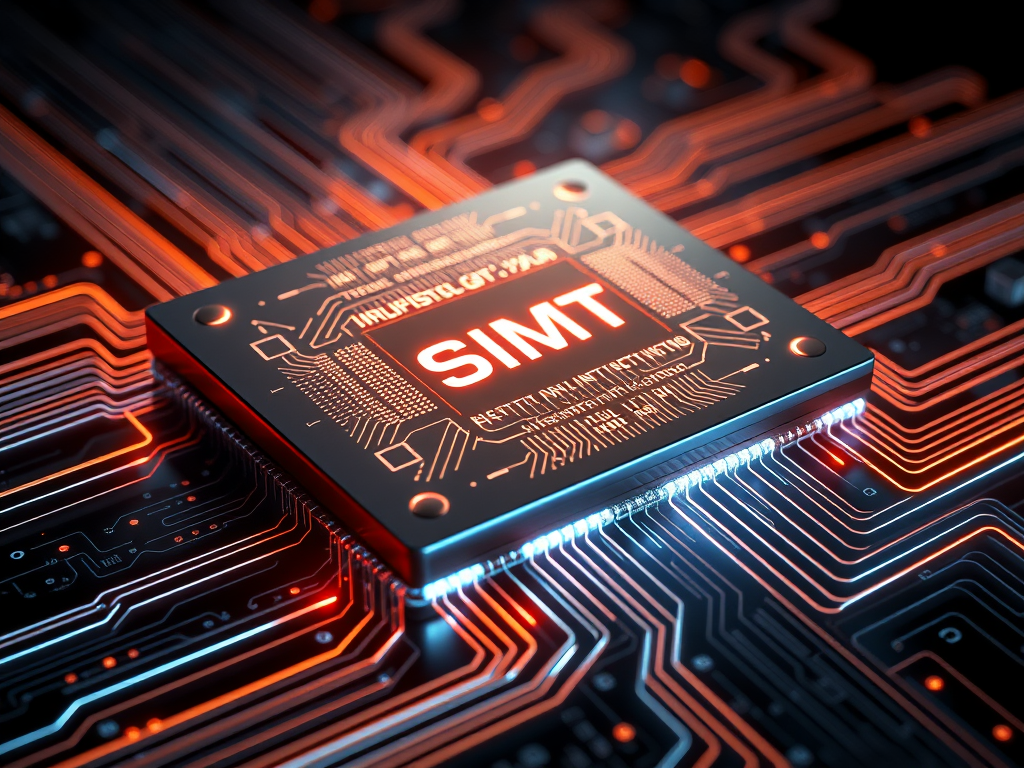
Single Instruction, Multiple Threads (SIMT) Graphics Processing Units (GPUs) have become a cornerstone in the world of high-performance computing. Their ability to process multiple threads simultaneously has made them invaluable assets in various fields including gaming, artificial intelligence (AI), and scientific research. This article delves into the intricacies of SIMT GPU architectures, their applications, and the impact they have on modern technology.
Understanding SIMT Architecture
The concept of Single Instruction, Multiple Threads (SIMT) is pivotal in maximizing the efficiency of GPUs. Unlike traditional CPUs that execute multiple instructions simultaneously, SIMT architecture allows a single instruction stream to control multiple processing elements in parallel. This approach is particularly advantageous for tasks that can be broken down into smaller, repetitive operations.
SIMT architecture works by grouping multiple threads into warps. Each warp executes a single instruction across different data sets simultaneously. This parallelism is what makes SIMT GPUs exceptionally powerful for tasks such as rendering graphics, processing large data sets, and running complex algorithms. The efficiency gained through this architecture means faster processing times and more accurate computations.
GPUs utilizing SIMT architecture are particularly effective in handling massive computational loads because they can keep thousands of threads in-flight at any given time. This capability allows them to manage tasks that require significant parallelism more effectively than traditional CPUs.
Comparing SIMT to Other Architectures
While SIMT architecture shares some similarities with Single Instruction, Multiple Data (SIMD) architectures, it differs primarily in flexibility. SIMD operates on a single data set at a time across multiple cores, making it less adaptable to varying data structures compared to SIMT. On the other hand, Multiple Instruction, Multiple Data (MIMD) architectures provide more flexibility but at the cost of increased complexity and lower efficiency in certain tasks.
SIMT’s strength lies in its balance between these two approaches—offering a middle ground that maximizes performance without sacrificing flexibility. This makes it ideal for applications where both high throughput and adaptability are required.
Applications of SIMT GPUs
The applications of SIMT GPUs extend well beyond graphics rendering. In fact, they play a crucial role in several cutting-edge technologies today.
Gaming Industry
The gaming industry has been one of the most significant beneficiaries of advances in SIMT GPU technology. Modern video games require immense computational power to render complex graphics in real-time. SIMT GPUs enable developers to create visually stunning environments with realistic physics simulations and detailed textures.
With the advent of ray tracing—a technique that simulates how light interacts with objects—SIMT GPUs have become even more vital. Ray tracing requires calculating vast numbers of light paths simultaneously, a task perfectly suited for SIMT’s parallel processing capabilities.
Artificial Intelligence and Machine Learning
In AI and machine learning domains, SIMT GPUs have revolutionized how data is processed and analyzed. Training machine learning models involves processing vast amounts of data through numerous iterations—a computationally intensive task that benefits immensely from the parallelism offered by SIMT architectures.
For instance, deep learning frameworks such as TensorFlow and PyTorch leverage GPU acceleration to significantly reduce training times for complex neural networks. The ability to handle multiple operations concurrently accelerates model development and deployment.
Scientific Research
In scientific research, especially fields like computational chemistry and astrophysics, simulations often require processing enormous datasets with high precision. SIMT GPUs provide researchers with tools to perform these computations efficiently.
This capability allows scientists to conduct experiments that were previously impossible due to computational limitations. For example, modeling molecular interactions or simulating cosmic phenomena can be executed more accurately and swiftly using GPU-accelerated platforms.
Choosing the Right SIMT GPU
Selecting a suitable GPU depends on several factors including budget, specific application needs, and future scalability considerations.
Key Considerations
- Performance: Evaluate the number of cores and memory bandwidth as these directly influence the processing power available for your tasks.
- Compatibility: Ensure that your chosen GPU is compatible with your existing system architecture and software requirements.
Popular Models
NVIDIA’s RTX series and AMD’s Radeon RX series are popular choices for both gamers and professionals alike due to their high performance-to-cost ratio. These models support ray tracing and other advanced features enhancing both gaming experiences and professional workloads.
The Future of SIMT GPUs
The future looks promising for SIMT GPUs as advancements continue at a rapid pace. With ongoing research into improving energy efficiency alongside performance gains through architectural innovations like chiplet designs or integration with AI-specific hardware accelerators—the potential applications appear limitless.
Evolving Technologies
Emerging technologies such as quantum computing could further influence developments within this domain by introducing new paradigms that complement existing GPU architectures rather than replacing them entirely.



